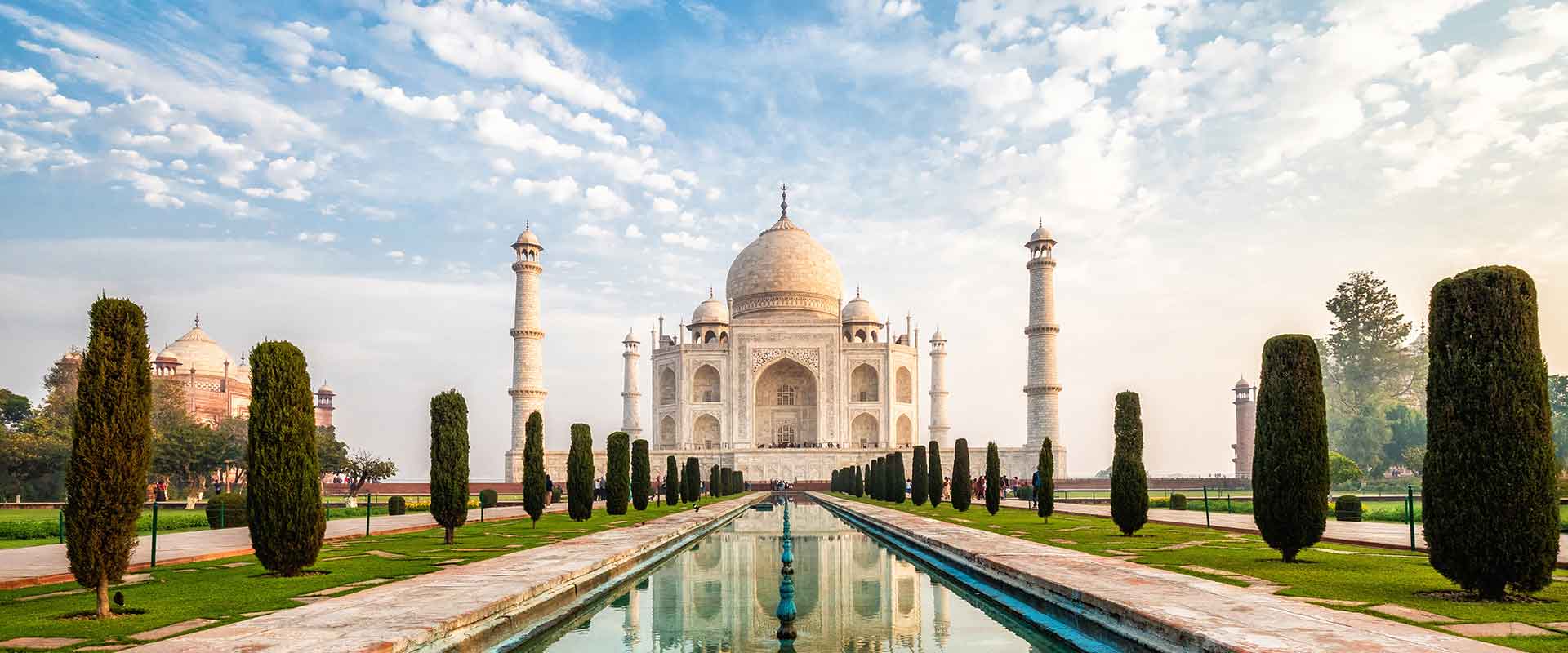The Taj Mahal is a renowned monument located in Agra, India. It is considered one of the most beautiful examples of Mughal architecture and is recognized as a UNESCO World Heritage Site. Here’s a brief history of the Taj Mahal:
Construction:
The construction of the Taj Mahal was commissioned by the Mughal emperor Shah Jahan in 1632 as a mausoleum for his beloved wife, Mumtaz Mahal. Mumtaz Mahal had passed away during the birth of their 14th child. The construction of the monument took around 22 years and involved thousands of artisans, craftsmen, and laborers.
Architects and Artisans:
The Taj Mahal was designed by a team of architects led by Ustad Ahmad Lahauri. Skilled craftsmen from various parts of the Mughal Empire and beyond were employed to create the intricate artwork and decorations. It is believed that artisans from Persia, Central Asia, and India worked together to build the monument.
Symbolism:
The Taj Mahal is considered a symbol of eternal love and devotion. It was built by Shah Jahan as a tribute to his wife Mumtaz Mahal, and it stands as a testament to their love. The Taj Mahal’s design incorporates various elements and symbolism, including the use of white marble, reflecting pools, and beautiful gardens.
Architecture and Design:
The architectural style of the Taj Mahal is a blend of Persian, Islamic, and Indian influences. The monument is primarily constructed using white marble, which was brought from Makrana in Rajasthan. The main dome, rising to a height of approximately 73 meters (240 feet), is surrounded by four smaller domes. The exterior of the Taj Mahal is adorned with intricate marble inlays, calligraphy, and geometric patterns.
Completion and Later History:
The Taj Mahal was completed in 1653, and it became the final resting place for Mumtaz Mahal’s tomb. Shah Jahan was also buried beside her after his death. The monument remained under the care of the Mughal Empire until the 18th century when the empire declined. Over the years, the Taj Mahal faced challenges such as neglect, weathering, and pollution. However, restoration efforts have been undertaken to preserve its beauty.
Tourism and Significance:
Today, the Taj Mahal is one of the most popular tourist attractions in India, attracting millions of visitors from around the world. It is admired for its architectural grandeur, intricate craftsmanship, and historical significance. The Taj Mahal’s beauty and cultural importance have made it a symbol of India’s rich heritage and a UNESCO World Heritage Site.
Overall, the Taj Mahal stands as a testament to the Mughal Empire’s architectural brilliance and the enduring power of love.
With The Best Tour Package, There Is No Need For You To Be Concerned About Ways To Avoid All These Traps & Scams As An Expert Travel Instructor Will Guide You Throughout Your Trip. When Picking A Tour Package For Agra, You Will Get Alternatives Such As A Same-Day Agra Tour By Car, Same-Day Agra Tour by Train, Taj Mahal Sunrise Tour, or a Taj Mahal Sunset Tour. If You Desire To Get A Trouble-Free And Comfortable Traveling Experience, You Must Get A Same-Day Car Tour Package. This Tour Package Is Perfect For Those Who Don’t Have Much Time And Riches To Spend On Travels And Wish For A Speedy Getaway From Their Daily Chaotic Life.


